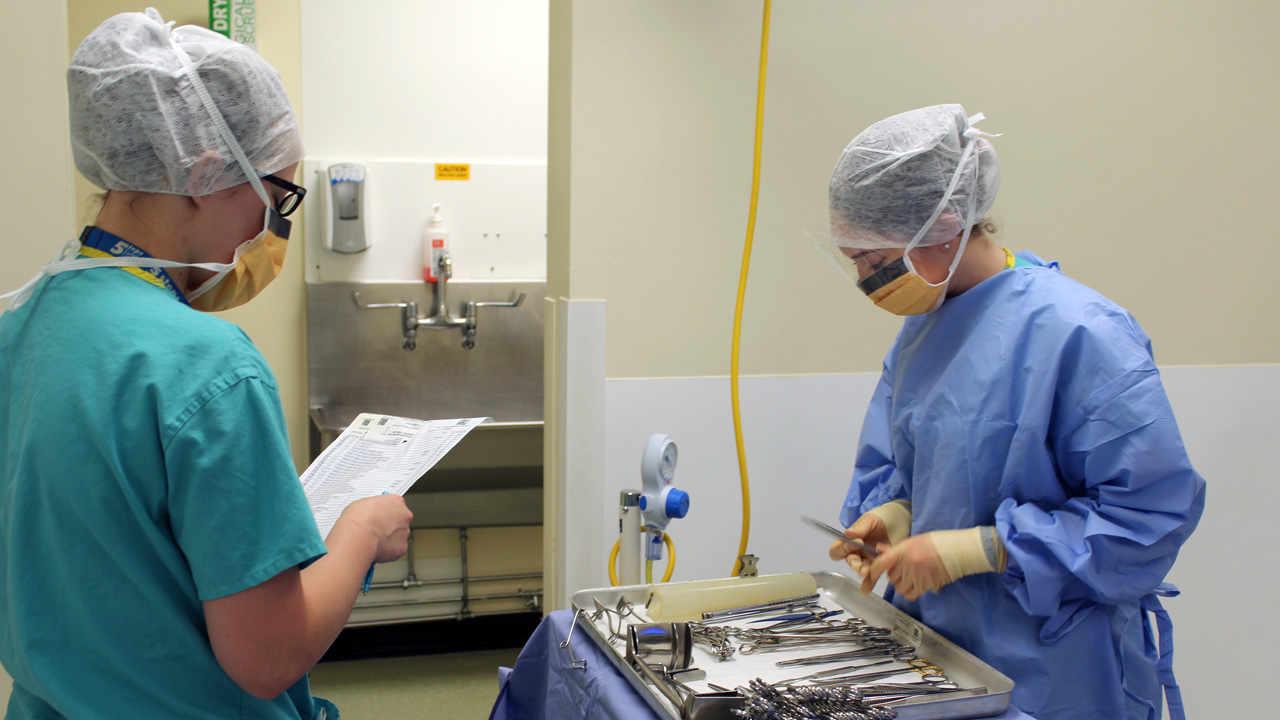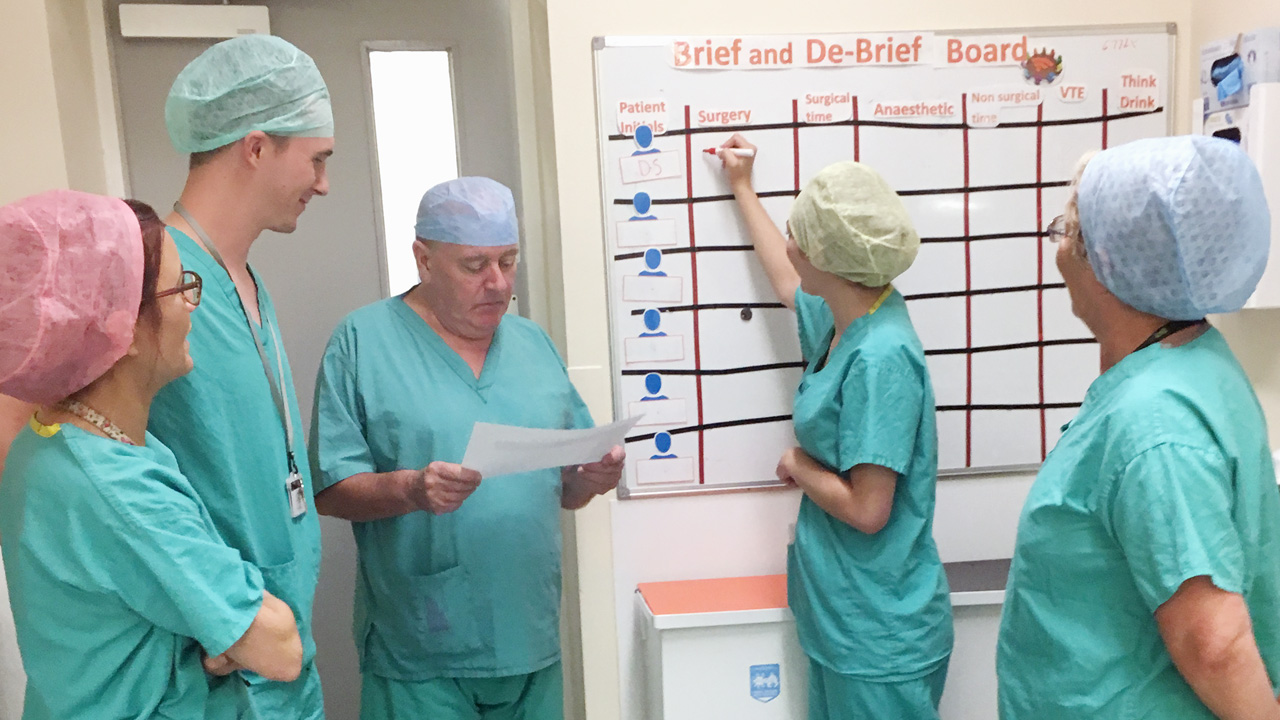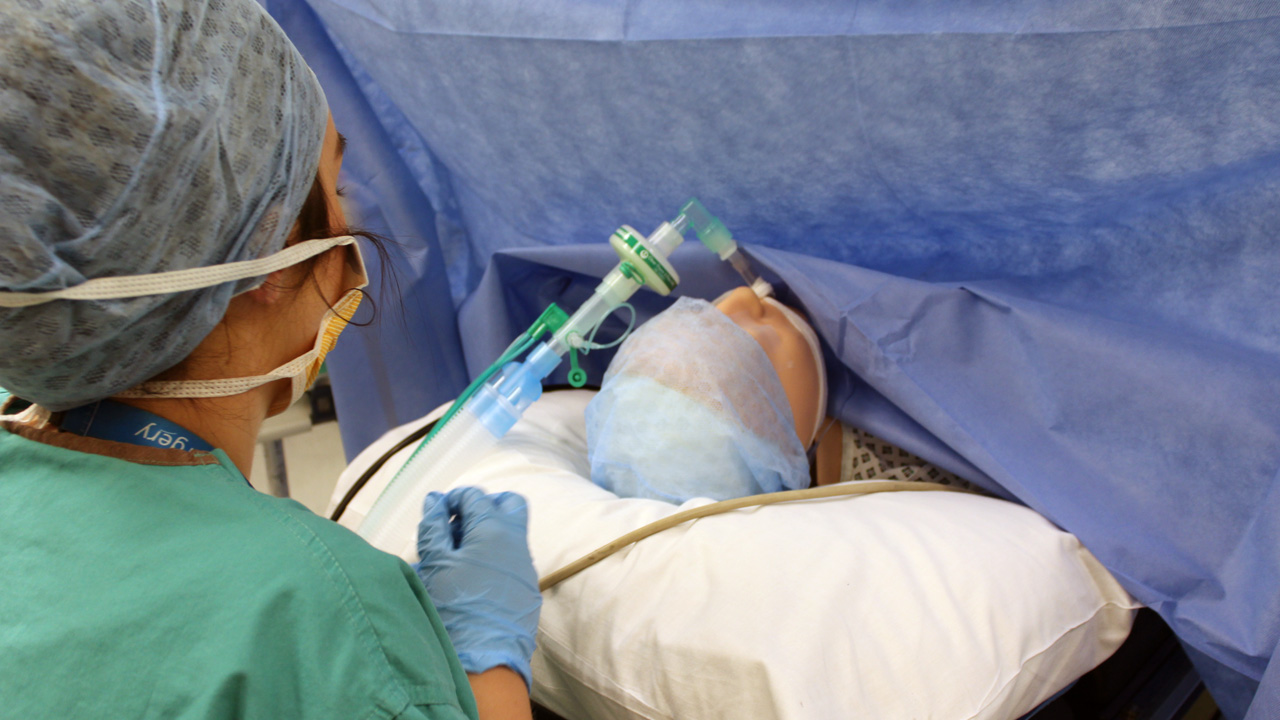4. Infection Control
Read Aloud
Operating Theatre
Each modern operating theatre has the potential to change the way air flows through the theatre. This helps to minimise airborne infections circulating around the room. This is why we only enter through specific doors. All operating theatres are cleaned at the end of every case and fully cleaned at the end of every theatre list (group of operations).
In the operation, the surgeon and the scrub practitioner will both be ‘scrubbed’ and will wear sterile gowns and gloves. During an operation, everyone within the theatre will have a mask over their nose and mouth.
We have a briefing at the beginning and end of every day to discuss the day’s theatre list and any patient specific requirements, eg if a patient has diabetes, multiple pregnancies.

Read Aloud
Staff
The strangeness of the environment is made stranger by healthcare professionals wearing scrubs. The potential for infection to complicate surgery is very high, so to minimise this, a number of techniques are used:
All personnel get changed prior to working in the operating theatre, wearing surgical hats, crocs for footwear and scrubs (green cotton uniforms). This lowers the risk of a person’s clothing transferring infection.
It is difficult to know who is who, so different hats indicate different roles and responsibilities, for example, learner, qualified practitioner, person in charge and team leader. Colours of hats in each operating theatre can change according to local preferences.
As well as the surgeon undertaking the operation, there will be an anaesthetist, operating department practitioners and nurses. In some specialist theatres, there may be other specialist personnel too.

Read Aloud
Patient
There is only ever one patient operated on at a time within the operating theatre. The patient is anaesthetised (falls asleep) in the anaesthetic room of the same theatre by the same team.
Sterility next to the patient is created by sterilising the skin and covering it with sterile surgical drapes. Where possible, 'single patient use only' equipment is used, eg some of the anaesthetic equipment is disposed of after use. Reusable equipment, for example, the drapes and instrument trays are sterilised prior to being opened. Following use, equipment is returned to the Central Sterile Services Department for cleaning and sterilisation between every patient.
From when the patient is collected from the ward throughout the operation, the name, date of birth and patient identification number are checked at numerous times at different ‘stop’ points. The patient should have two wrists bands on so the identity of the patient can be checked especially when asleep having had a general anaesthetic. Immediately prior to the operation starting, the whole team gather around the patient at a ‘stop’ point to recheck the details, visually check the consent form and the digital theatre operating list to ensure all details agree with each other.
Only when the operating team are happy the patient is safe, can the operation begin.
